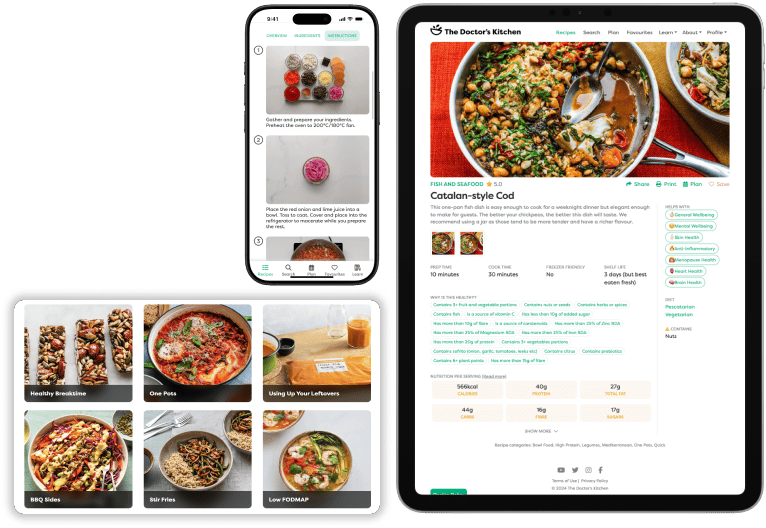Cinnamon: Health-promoting properties
17th Nov 2023
Cinnamon is a festive favourite, but its charm doesn’t stop there. More than a spice for sweet treats, it has been highly prized since ancient times, provides health-supporting benefits and adds depth of flavour to savoury dishes.
Key points
In a Nutshell

Plant Tales
A product of colonial exploitation. Cinnamon is native to Sri Lanka. Once valued higher than gold in Europe for its rarity and medicinal properties, it attracted many invasions during the 16th-18th centuries – first the Portuguese, The Dutch and then the British. European countries without direct access to the cinnamon trade tried to imitate, substitute, steal, smuggle, or transplant the ‘true’ product from Sri Lanka.
Made from dried tree bark. Cinnamon is made from the inner bark of the Sri Lankan cinnamon tree (‘Cinnamomum verum’). The spice is made by peeling the bark and drying it until it curls into rolls known as cinnamon sticks. It has a warm sweet flavour, giving rise to its name derived from the Greek for ‘sweet wood’.
True cinnamon? You might’ve heard about the two main types of cinnamon – ‘Ceylon’ or true cinnamon and ‘Cassia’ cinnamon, which is less expensive and commonly found in supermarkets. They come from different tree species and differ in their chemical composition. But the term ‘true’ is being debated as it reflects the historically contingent tastes of Europeans, rather than any botanical category. The cinnamon of Sri Lanka was valued for its supreme quality as a spice, but various other ‘Cinnamomum’ species are also used under the name ‘cinnamon’.
Health Potential
Beneficial compounds: Cinnamaldehyde is one of the main compounds isolated from the bark of cinnamon trees that makes it a powerful therapeutic spice, alongside eugenol, cinnamic acid, linalool and many polyphenols. Together, they give cinnamon health-promoting properties, including immune-modulating, antioxidant and vasodilating.
Disease prevention: In human studies, cinnamon intake has been linked to:
- Improved cardiometabolic health: Big research found that cinnamon supplementation improved the lipid profiles, glycemic status, blood pressure, and waist circumference of adults with metabolic diseases. (Kutbi et al. 2022)
- Reduced inflammation and oxidative stress: A large analysis of 12 trials concluded that cinnamon administration significantly decreased participants’ markers of inflammation and increased their antioxidant capacity. (Zhu et al. 2020)
- Improved symptoms of arthritis: A small trial found that daily cinnamon consumption improved clinical symptoms and inflammatory markers in women with rheumatoid arthritis. (Shishehbor et al. 2018)
- Reduced migraines: Cinnamon supplementation reduced the frequency, duration and severity of migraines, as reported by the participants of a small preliminary study. (Zareie et al. 2020)
In daily life: Up to 1.5 grams per day – less than a teaspoon – was sufficient for beneficial health effects.
Is cinnamon toxic? There have been concerns about ‘Cassia’ cinnamon because it contains higher amounts of coumarin, which can be harmful to the liver in prolonged high doses or in people with liver disease. For most people, eating it as a spice doesn’t exceed safe levels, according to a UK survey. However, if you’re taking supplements, ‘Ceylon’ cinnamon may be a better option.
Cooking & Flavour
Our favourite ways to enjoy cinnamon
- Stews: A pinch of cinnamon can add sweetness and create more complex flavours.
- Traybakes: Toss vegetables like sweet potatoes, carrots and Brussels sprouts with a mix of olive oil, cinnamon, salt, and pepper. Or rub over fish fillets before baking.
- Stir-fries: Mix cinnamon, chilli, cumin seeds, soy sauce and vinegar. Add to your go-to stir fry with vegetables, tempeh, tofu or chicken and noodles.
- Oats and yoghurt: Add a sprinkle of cinnamon to add flavour and natural sweetness to greek yoghurt or porridge with fruits, nuts and seeds.
- Cinnamon-infused coffee: Add a pinch to your coffee to complement the richness and create a comforting beverage.
4 recipes to try
- Sri Lankan Inspired Aubergine Slow Cooker Curry
- Orange-zested Chocolate Bark with Berries
- One Pan Chicken Orzo
- Shredded Ras El Hanout Tofu Flatbreads with Hummus
- Access over 800 research backed recipes
- Personalise food for your unique health needs

Relevant recipes
-
Free!Drinks
Cami's Mulled Wine
-
Free!Budget Friendly 4.7
Easy Overnight Oats
-
Free!Soups 4.6
Creamy Pumpkin, Carrot & Ginger Soup
-
Free!Curries 3.3
Sri Lankan Inspired Aubergine Slow Cooker Curry
-
Free!Curries 4.6
Cashew Curry with Chickpeas and Crispy Mushrooms
-
Free!Tray Bakes 4.8
Spicy Shredded Tofu Tacos with Avocado and Coriander
-
Free!Dessert 5.0
Oat, Banana & Cinnamon Pancakes with Berries
-
Free!Quick Breakfasts 4.8
Quinoa and Chia Porridge with Banana and Blueberries
-
Free!Tray Bakes 5.0
24 Hour Soaked Teff Scones
-
Dessert 5.0
Apple, Cinnamon, and Almond Cake
Related articles
-
Ingredients
Bread: How to choose quality loaves
-
Ingredients
4 evidence-based foods to eat every day
-
Ingredients
Chocolate: Adding a healthy twist
-
Ingredients
Potatoes: Are they healthy?
-
Ingredients
Cranberries: Memory Boost!
-
Ingredients
Brussels sprouts: Your flu season allies
-
Ingredients
Leeks: Why we love them
-
Ingredients
Carrots: Do they actually improve eyesight?
-
Ingredients
Broccoli: Easing the effects of air pollution?